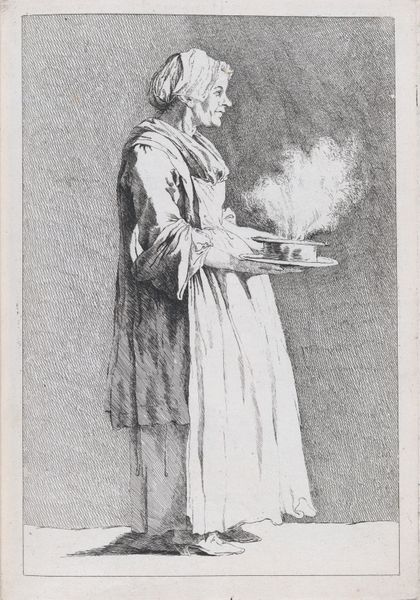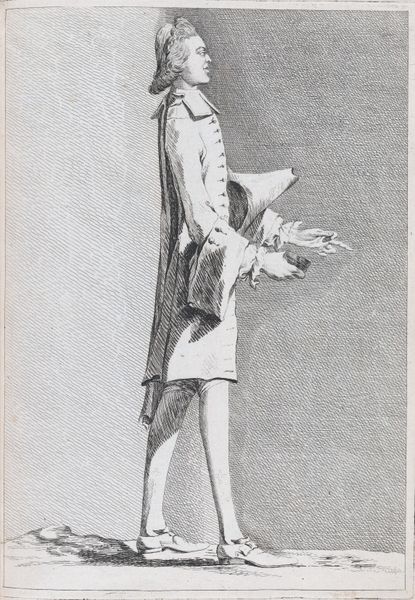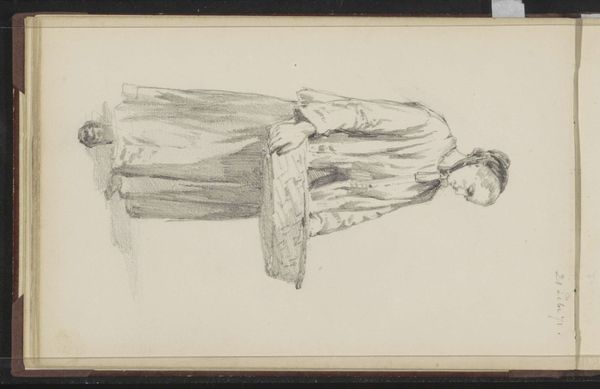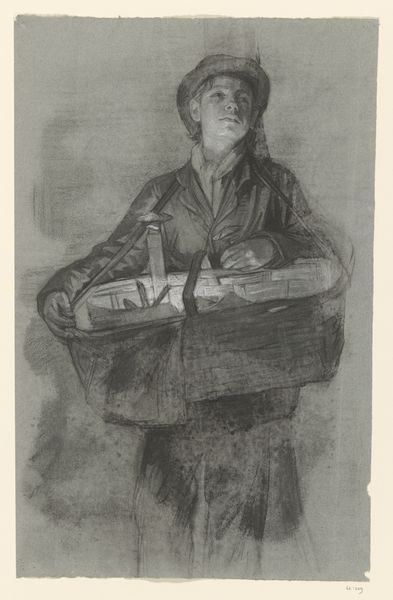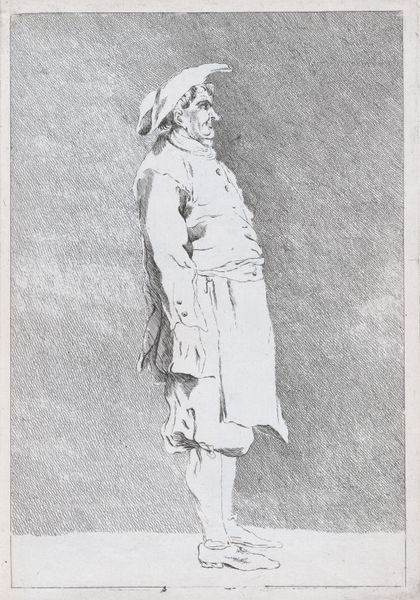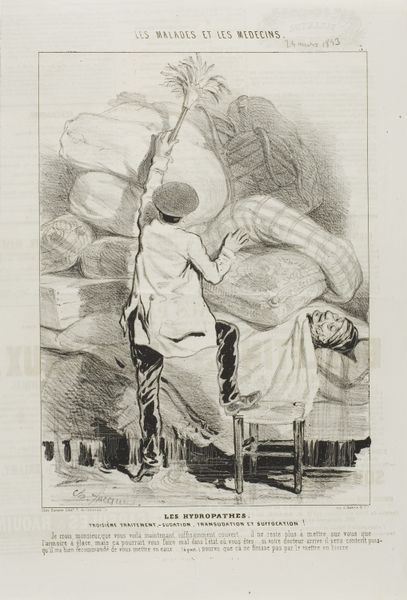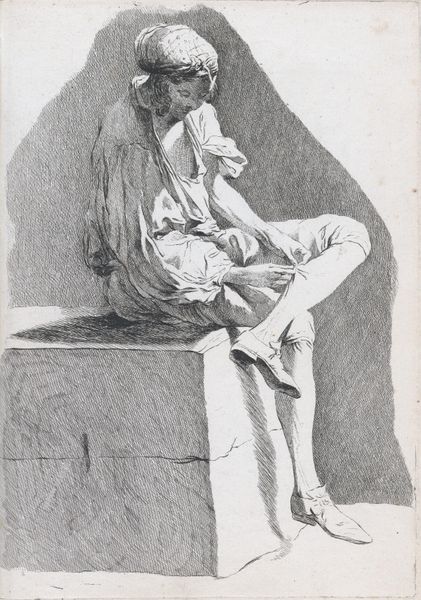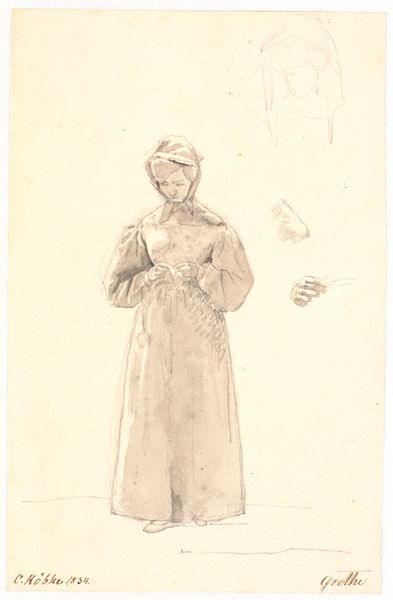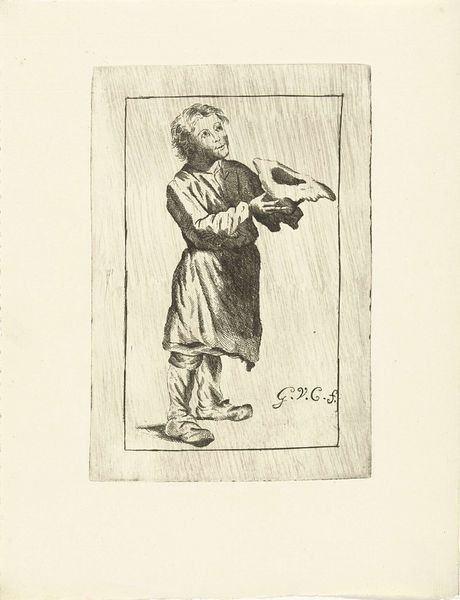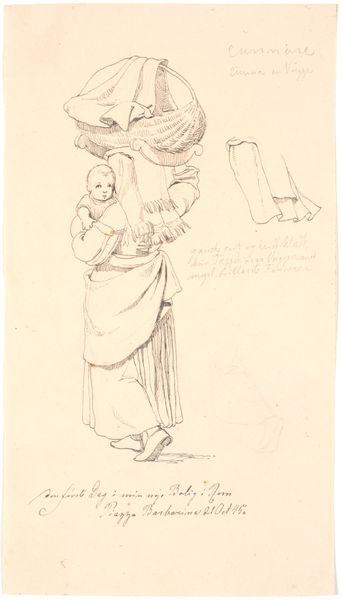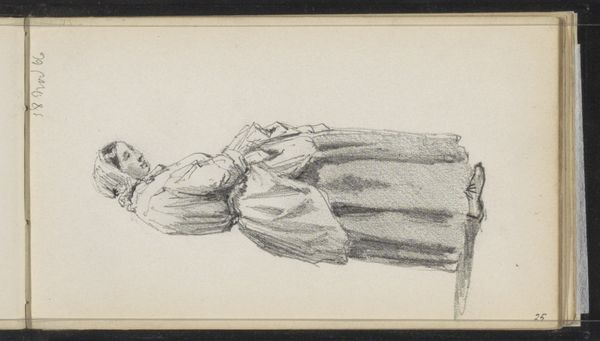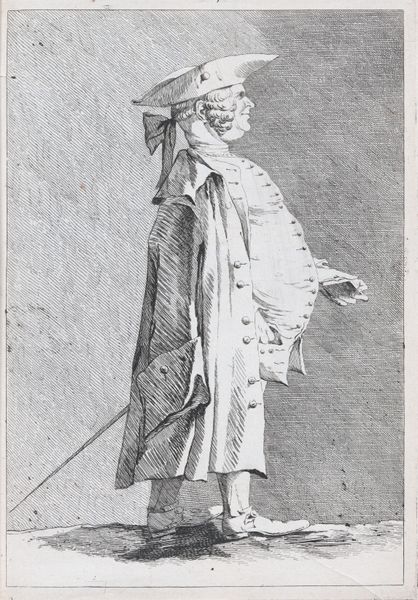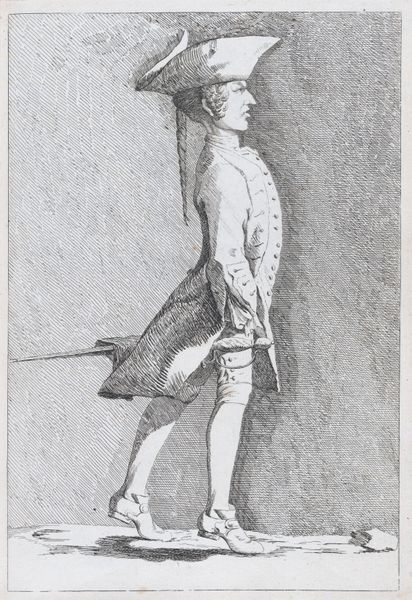
Rita Pontani, Laundress at the French Academy in Rome (?), pl. XII from "Recueil de caricatures" 1749 - 1759
0:00
0:00
drawing, print, etching
#
portrait
#
pencil drawn
#
drawing
#
baroque
# print
#
etching
#
pencil drawing
#
portrait drawing
#
genre-painting
Dimensions: Sheet: 11 1/8 × 7 7/8 in. (28.3 × 20 cm) Plate: 10 5/8 × 7 1/2 in. (27 × 19 cm)
Copyright: Public Domain
Editor: This etching, "Rita Pontani, Laundress at the French Academy in Rome (?)" was created sometime between 1749 and 1759. It's attributed to Ange-Laurent de La Live de Jully. It's quite striking, even cartoonish, but I wonder what was the message here. How do you interpret this work, thinking about it materially and socially? Curator: This piece grabs me because of the overt display of labor within the traditionally ‘high art’ setting of the French Academy. The materiality of the printmaking process – the etching itself – is crucial. It takes labor to produce these artworks and multiples of them. Consider the social context: Why immortalize a laundress within this artistic institution through the reproducible form of a print? Editor: That’s a great point, bringing labor into this very fine art space through reproduction. It sort of democratizes the subject, doesn't it? What does it suggest about the status of labor in art at the time? Curator: Precisely. Etchings like these question established artistic hierarchies and bring in real working conditions. The print, easily disseminated, implicates the viewer. Who would be purchasing and displaying this? Are they wealthy patrons amused by the depiction of a lower class at work or do they sympathize with the worker? It calls for attention to the social function of images. Consider also, what materials was the subject using daily? The materiality of daily life and the artwork itself coalesce. Editor: I hadn’t thought of it that way – not just the labour of *making* the art, but the labour represented *in* the art. Curator: Exactly! Thinking about production this way breaks down those rigid high/low art barriers. Editor: This has been very helpful; I’m now appreciating the interplay between labor, the etching process, and the social context of 18th century Rome. Curator: Indeed, viewing art with a materialist perspective opens up dialogues about power, production, and consumption that often remain hidden.
Comments
No comments
Be the first to comment and join the conversation on the ultimate creative platform.
